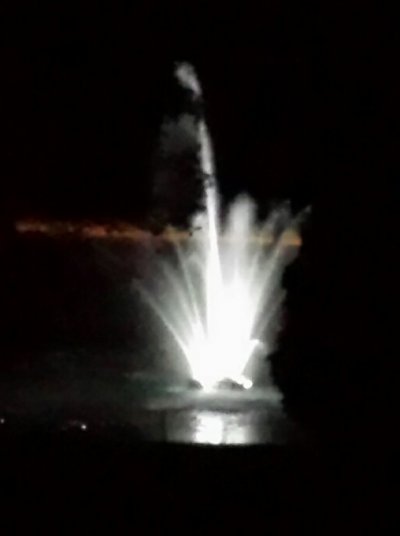Tom
Administrator
- Joined
- Jan 13, 2005
- Posts
- 51,896
The HOA contractors wired lights to the fountain in the pond alongside our home away from home. Last night was the first time we'd seen the "lit" fountain. I grabbed my cell phone and snapped a few shots, but they were pretty poor. Attached is one of the cropped shots, which I'm embarassed to show.
Plan B - I grabbed one of my DSLRs and tried some of the preset 'scene' settings, including night and fireworks. It was very apparent that I needed a tripod, and this was our first trip when I'd left the tripods at home.
I'm going to try again tonight using a small table in place of a tripod. Anyone have any suggestions for camera settings?
TIA.
Plan B - I grabbed one of my DSLRs and tried some of the preset 'scene' settings, including night and fireworks. It was very apparent that I needed a tripod, and this was our first trip when I'd left the tripods at home.
I'm going to try again tonight using a small table in place of a tripod. Anyone have any suggestions for camera settings?
TIA.

